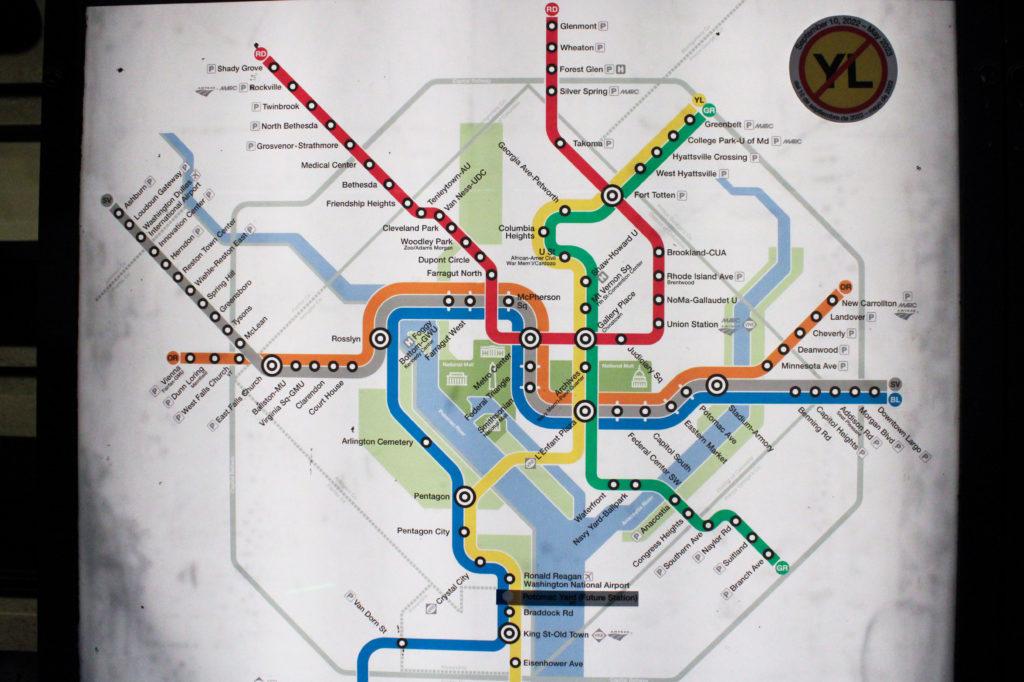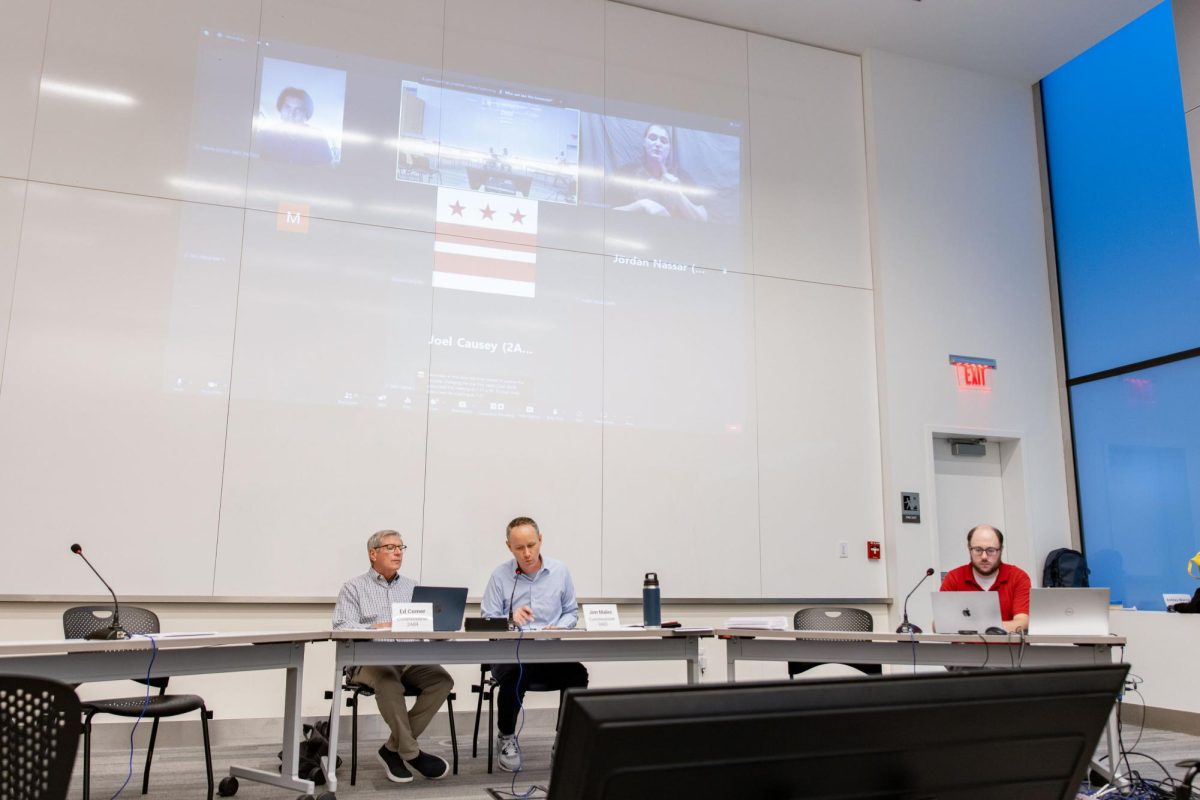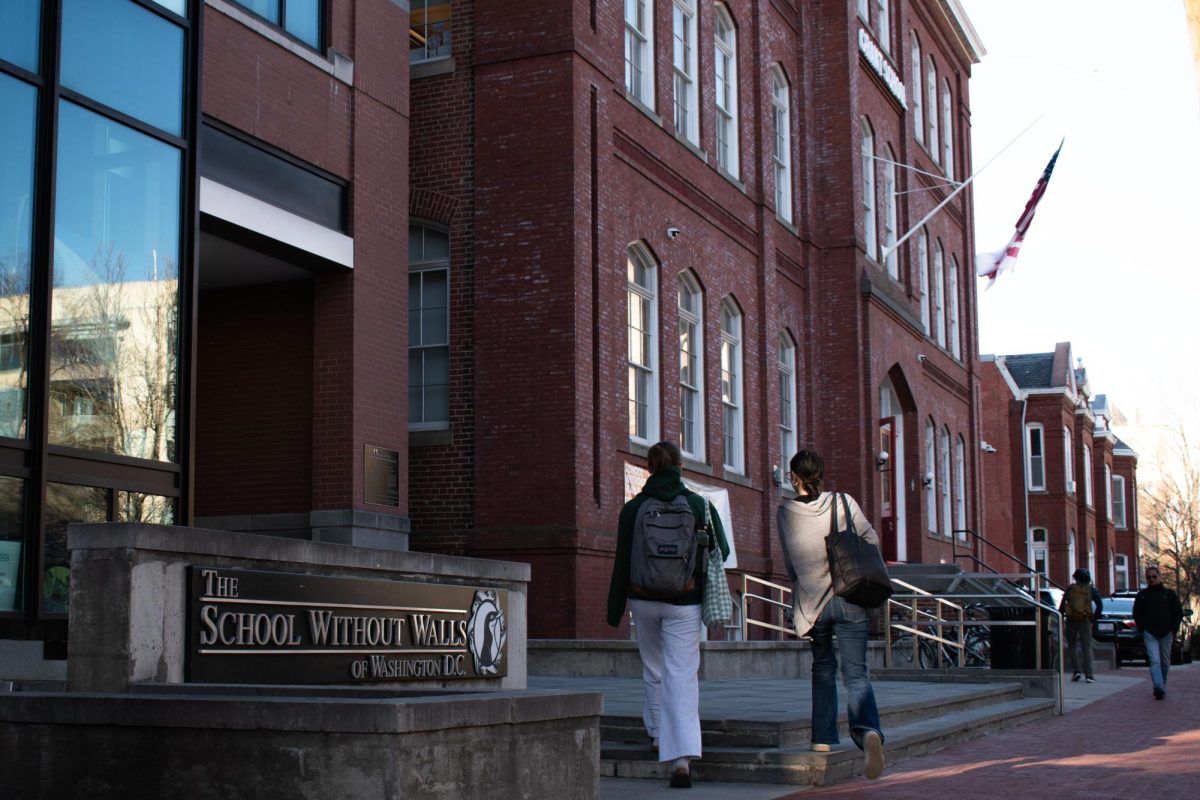Commuter students are bracing for extended travel times and long lines on the Metro in Northern Virginia after the Washington Metropolitan Area Transit Authority delayed the reopening of six stations until early November.
In a release issued late last month, WMATA announced it pushed back the reopening of six Blue and Yellow line stations south of Reagan National Airport from Oct. 23 to Nov. 6 to reinforce the ground under the tracks at the newly constructed Potomac Yard station after encountering stability issues last month. WMATA began offering free shuttle service between all six stops during the closures, but student commuters said they must now account for shuttle delays of about 15 minutes with diverted riders building up at open stations.
Metro officials first closed the Braddock Road, King Street-Old Town, Eisenhower Avenue, Huntington, Van Dorn Street and Franconia-Springfield stations to connect the new Potomac Yard station – located between the Reagan and Braddock Road stops – with the rest of the Metro system in early September.
“On behalf of our customers and the City of Alexandria, we apologize for this inconvenience,” Andy Off, WMATA’s executive vice president of capital delivery, said in a release. “We will continue to work as quickly as possible to deliver a high-quality station, and we are doing everything within our power to move the project forward in a safe and responsible way.”
The release states that free Blue Line Local shuttles run between the stations every 10 to 20 minutes during all Metrorail operating hours, while the Blue Line Express shuttles come every six minutes between the Franconia-Springfield to Pentagon stations during rush hours – 4:30 to 9:30 a.m. and 3:30 to 7:00 p.m. During all other hours, the Blue Line Express operates from 4:30 to 9:00 p.m. on weekdays and 7:30 to 9:00 p.m. on weekends with arrivals spaced out by every 15 minutes.
WMATA officials said in the release that the shuttles are operated using a combination of standard Metrobuses and coach buses, and fare vending machines will not be available at the closed stops.
Enzer Khurshid, a sophomore living in Arlington, said she was “disappointed” to hear about the stop closures, which she said lengthened her commute time by 15 to 20 minutes because of the shuttles’ “unpredictable” arrival times. She said even if she plans her commute ahead of time, she still risks being late to campus.
Khurshid said she used to take the Blue Line to campus from the Van Dorn station before the closures – which is about a 10-minute drive from her home – and would pay a $5 fee to park her car at the station. She said she now drives 15 extra minutes to the nearest open station, Franconia-Springfield, which now offers free parking because of the closures.
“It’s not too much further away from my house than the Van Dorn station is, but it’s a bigger station so parking looks different and it just takes longer to walk down to where the buses would be enough to get on the shuttle bus,” Khurshid said.
Khurshid said she now takes the express shuttle bus from Franconia-Springfield to Pentagon station, where she gets on the Blue line to Foggy Bottom. She said the buses have arrived late twice this semester and caused her to miss the next Blue Line train from Pentagon station, which adds seven to 10 minutes to her trip.
“Normally, it would have taken me less than 30 minutes to get to Foggy Bottom, but now to get to campus, it takes me around 45 minutes, sometimes even 50, depending on how long I’d have to wait for the bus and then the actual Metro train,” Khurshid said.
Alexandra Trotter, a junior living about 10 minutes away from the Franconia-Springfield station, said her normal commute has lengthened from 55 minutes to 65 minutes since the closure of the stops because of long lines of riders waiting for shuttles. She said she sometimes has to wait for a second shuttle after one arrives because the amount of idling passengers often exceeds the capacity of a single bus at rush hour, making it difficult for her to predict the length of her commute.
“It’s hard to time yourself because the bus takes a couple of minutes to fill, so I don’t really know what exactly their schedule is,” Trotter said.
Trotter said the three legs of her commute have made the trip less relaxing because transferring from the shuttle to the Metro has interrupted her time to work while commuting. She said factors like free parking at the Franconia-Springfield station and “fancy” coach buses used as a shuttle alternative “more than makes up for” the stop closures.
Trotter said she was “not really surprised” to hear about the reopening delays because of WMATA’s track record with service issues. She said the recent closures have not delayed her commute as severely as when Metro service closed between the Rosslyn and Pentagon stations and all of WMATA’s 7000-series trains were pulled from service after the derailment of a Blue Line train last October.
WMATA reintroduced eight of the 7000-series trains to service the Green and Yellow lines in June and added a dozen more to the system in September. WMATA officials haven’t said when 7000-series trains will return to the Blue, Orange or Silver lines, but while they remain out of service, trains will operate less frequently.
“It seems in line with how disorganized Metro tends to be,” Trotter said.
Izaz Ahmad, a freshman living an hour away from campus, said his commute to GW has grown by 20 minutes because of the closures. He said he now drives 30 minutes from his home in Woodbridge to reach the Franconia-Springfield station, where he would normally take the Blue line straight to campus, but now he takes the express shuttle to the Pentagon station and the Blue Line to Foggy Bottom from there, which takes about 45 minutes in total.
Ahmad said he has faced 15-minute wait times for shuttles on his commute to and from campus, going in both directions at the Franconia-Springfield and Pentagon stations.
“At first I didn’t like it, because I thought I was just going to have to drive all the way, but then I realized they have shuttles, which was still not that good because it adds 20 minutes to my ride and getting to campus,” Ahmad said.
He said the “upside” of the station closures is the complimentary parking offered at Franconia-Springfield because of closures because he usually has to pay $10 to park at the station during the day.
“Sometimes, like the shuttles, some of them, they smell really bad [it’s] so annoying,” Ahmad said. “But then again, that’s only like a one in 10 chance so then I’d say it’s alright, it’s not that bad.”







